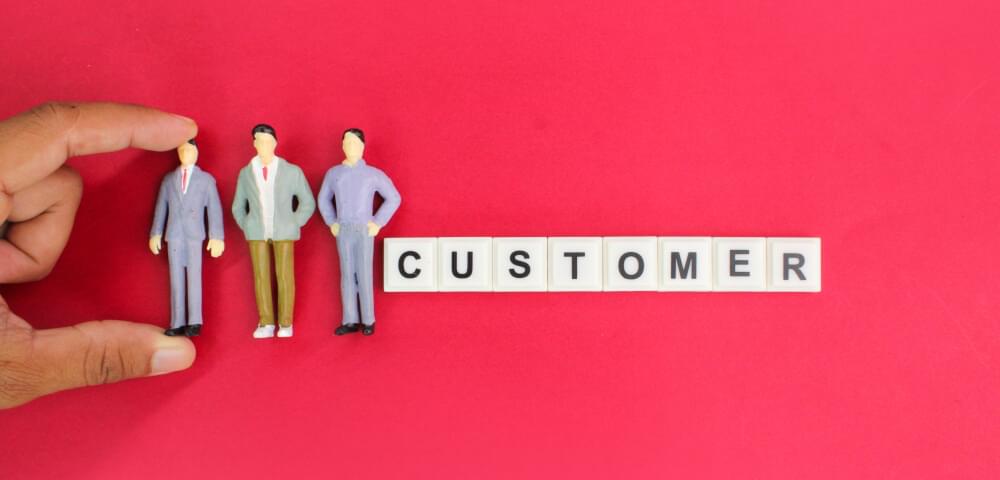
The Power of Personalization: How to Use Customer Data to Improve Customer Retention Personalization

Customer loyalty is critical to any business’s prosperity, and Customer Retention Personalization can significantly enhance it. It shows that your customers are content with what you offer, eager to make repeat purchases, and likely to advocate for your brand. The question is, how can you increase customer loyalty and boost retention rates? One of the most effective strategies is introducing personalization into the customer experience.
This blog will explain how customer personalization can amplify satisfaction and retention and provide you with actionable steps to use customer data to maximize revenues and conversions! Let’s begin!
What is Personalized Marketing?

Personalized marketing is a clever way companies talk to their customers. They gather data about what customers like, usually buy, and their shopping behaviors. Then, they show what customers might be interested in when they’re most likely to want. It’s all about giving them what they like, just when they need it. And here’s why it matters: it helps them feel more loyal to your brand. In fact, studies say that when companies provide a personalized experience, 80% of people are more likely to buy from them. So, it’s like a win-win – you make them happy, and they keep returning for more.
Why Personalized Marketing Matters
Personalized marketing has a bunch of benefits that you’ll want to know about:
Building Stronger Relationships
Do you know how it feels nice when someone “gets” you? Well, personalized marketing does that for customers. When a business sends a message about what they like and need, it makes them feel seen and understood. And when they feel that way, they’re more likely to respond, whether purchasing or signing up for a new service.
More Conversions and Sales
If you show them products and services that match their interests, they’d be more likely to buy, right? Businesses that use personalization in their marketing strategies see an average increase of 20% in sales. It shows them things that are right according to their taste and interest, making it more likely that they’ll make a purchase. They will feel like shopping in their favorite store where everything’s their style.
Boosting Customer Loyalty
When a business “understands” customers and knows what they like, they’re likelier to stick around. This kind of loyalty helps you in customer retention.
So, personalized marketing makes them happy by showing them what they like, and it makes you happy by keeping your customers around. But you need to use customer data in a good and open way because people care about their privacy and how it is used. So, it’s all about getting the benefits while playing it fair.
How Can You Improve Customer Retention?

Today, customers have tons of choices and high expectations. You can use data to make the shopping experience super personal to stand out and keep customers coming back.
Understanding What Customers Want
Big companies dig into customer data to get a clear picture of what customers like and what they’re looking for. It would help if you looked at customer preferences: how they engage with your stuff, what they buy, and even how they feel about things.
Better Product Suggestions
Have you ever seen suggestions like “You might also like this” when shopping online? It’s customer personalization data in action. You can look at what your customers have checked out before and suggest things they’d probably want.
Making Store Visits Awesome
Even in physical stores, customer data can make their visit cool. Stores can turn into more than just shops – they can become places where people with similar interests gather. Moreover, using the right technology, you can send them messages about deals and new stuff on their phone when they’re in the store.
Predicting the Hottest Trends
Have you ever wondered how stores always seem to have the latest trends? Customer data helps with that, too. It looks at what people talk about on social media, the season, and more to know what’s going to be in-demand.
Personalized Communication
You can create special shopping journeys just for them with all that data. You can send customized and direct mail based on what you know they’re into. Plus, when they visit your website, it shows them stuff they’re likely to love right at that moment.
Related: Effective Communication Strategies
So, when customers get personalized promotions via emails, great product suggestions, and stores that feel like they know them, it’s all due to customer personalization.
Types of Customer Data You Can Use for Personalized Marketing
For marketing personalization, data plays a significant role. Businesses can use various types of customer data to improve retention.
Demographic Data
Demographic data covers things like age, gender, and where customers are located. It helps businesses understand their customers’ basic characteristics to create personalized promotions and offers that match.
Behavioral Data
This kind of data shows customer preferences and interactions with a business, its website, and its products. For instance, it can track what a customer has looked at and bought in the past, which helps suggest products or services they might like.
Social Media Data
Data from social media is also very helpful. It gives insights into what customers are interested in, their hobbies, and their social circles. By studying this data, you can find customers who might be interested in certain products or services and show them personalized promotions, ads, discounts, or offers.
Location Data
Knowing where a customer is can be super useful. Businesses can use geographical data to show ads for products or services that are available nearby or suggest activities popular in that area.
Psychographic Data
This kind of data digs deep into customers’ personalities, values, and lifestyles. It helps businesses understand what motivates and matters to their customers so they can create messages that really connect.
All in all, there are a bunch of data types that businesses can use for marketing personalization. The main thing is to use customer data in a way that’s fair and clear. When businesses provide content that fits their customers, they can make them happier and build stronger relationships.
The Role of Technology in Gathering and Analyzing Customer Data

Technology is a vital part of collecting and analyzing customer data for customer personalization. Here’s how it works:
Data Collection Through Digital Channels
Businesses use various digital channels like websites, mobile apps, and social media to collect customer data. For example, you can use cookies to track what customers do on their website or app and use this data to show them products that suit their interests.
Data Analysis with Technology
Once data is collected, businesses use technology to make sense of it and learn about customer preferences and behaviors.
They can also use machine learning to find patterns in customer data and even predict what customers might do in the future.
Data Visualization
Data visualization tools are often used to show customer data in a clear and easy-to-understand way. This helps businesses spot trends and patterns, which they can use to plan their marketing personalization strategies.
Delivering Personalized Content
Technology also helps send personalized content to customers. For example, you can use email platforms to send emails about what customers like. You can also use social media and online ads to show targeted content to customers.
However, as technology advances, it’s really important to consider how it affects customer privacy. Customers worry more and more about their personal data and how it’s used. So, you need to be clear about how you collect and use data to keep customer trust.
Technology, like customer retention platforms, is super important in getting, analyzing, and creating personalization communication with customers.
Common Challenges in Data-Driven Customer Retention Process

Making the customer experience better in retail sounds great, but turning the idea into reality comes with some hurdles. These are the obstacles that must be tackled before a company can use customer data for marketing personalization process.
Dealing with a Variety of Data
You need to gather data from different places, like what customers buy, how they respond to emails, and even stuff like what they’re into in their everyday life. You should put all of this data together into one big hub that can handle it all. Moreover, you should also be able to connect with various marketing platforms and other data sources.
Getting the Right Data
For personalization to work well, you need lots of the correct data. Top companies are finding ways to use data from other sources, like what people want to buy, what the weather’s like, and where people go. This helps them make the customer experience even more special.
Real-Time Actions
When personalizing websites, things need to happen really fast. As visitors move around a site, you need your tools to keep up with what visitors are doing and quickly change the content based on that. The closer you make this happen in real-time, the better the experience for website visitors and potential customers. So, your data system should be able to process customer data as it comes in and work with top marketing and e-commerce software.
Handling Lots of Data
To provide customers with personalized promotions, you need technology that can deal with a lot of data. So, you might need a cloud-based system with flexible storage and enough computing power to handle all the data needed for marketing personalization.
Making the customer experience more personal in retail is a fantastic idea, but it’s not always easy to do. You have to handle different data, ensure it’s the right data, act in real-time, and manage a big load of customer data to make it work.
The Future of Personalized Marketing Using Customer Data

Marketing personalization and customer data are always changing with new technologies and how people act. But one thing is clear: personalized marketing is here to stay.
Increasingly Personalized Experiences
As you collect and study more customer data, you’ll be able to provide even more personalized experiences. This means designing everything according to what each person likes and needs. It’s not just about ads and deals; it’s about suggesting products, making content just for you, and offering personalized customer service.
The Role of AI and Machine Learning
AI and machine learning will play a big part in the future of marketing personalization. These technologies can help you quickly analyze lots of customer data. This means you can offer even more personalized content and experiences.
Focus on Privacy and Security
Customer privacy and data security will become even more important. People know their data is valuable, so you will need to make strict rules to protect it and earn your customers’ trust.
Ethical Use of Data
You will have to be careful about how you use customer data. You should use data in an honest and fair way. Additionally, you should also avoid using data that might be biased or unfair.
Adapting to Changing Preferences
Customer preferences and behaviors will keep changing. You will have to keep up with these changes and provide experiences that match what customers want and find valuable.
Ongoing Evolution
In the end, personalized marketing and customer data will keep changing and improving. By staying up to date with new technologies and what customers want, you can use data to offer more personalized and useful experiences. This helps you build stronger relationships with customers and do better in your business.
It’s a Wrap!
Personalized marketing is a strong tool that helps you connect with customers and improve their experience. You can use customer data like what the customer looked at and bought, their basic info, and what they do on social media. With this customer data, you can provide content and offers that really matter and are useful to the customer.
But, there are some possible problems with personalized marketing. These include worries about privacy and the chance of data being taken without permission. To make sure personalized marketing is done right, you need to have a good plan and a perfect customer retention platform to use customer data effectively. You must be clear and fair in your practices and focus on data that actually matters for the customer’s experience.

